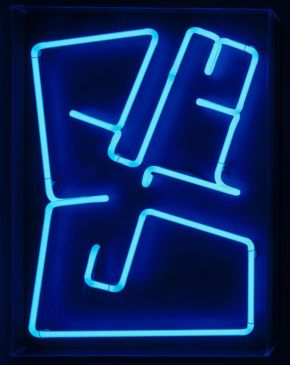Gyula Kosice and the Rise of the Argentinean Avant-Garde April 4, 2016

Gyula Kosice, Estructura lumínica Madí 6, 1946, neon gas, Plexiglas, and wood box, the Museum of Fine Arts, Houston, Museum purchase funded by the Caroline Wiess Law Accessions Endowment Fund. © Gyula Kosice
Gyula Kosice, La ciudad hidroespacial (The Hydrospatial City), 1946–72, acrylic, Plexiglas, paint, and light, the Museum of Fine Arts, Houston, Museum purchase funded by the Caroline Wiess Law Accessions Endowment Fund. © Gyula Kosice
Gyula Kosice, La ciudad hidroespacial (The Hydrospatial City) (detail). 1946–72, acrylic, Plexiglas, paint, and light, the Museum of Fine Arts, Houston, Museum purchase funded by the Caroline Wiess Law Accessions Endowment Fund. © Gyula Kosice
Photo by Daniel Mazza
Gyula Kosice, Röyi no. 3, 1944, wood joined with bolts and wing nuts, the Museum of Fine Arts, Houston, Museum purchase funded by the Caroline Wiess Law Accessions Endowment Fund. © Gyula Kosice
Gyula Kosice and La ciudad hidroespacial (The Hydrospatial City). Photo © Gyula Kosice
Gyula Kosice and Victor Vasarely.
Photo © Gyula Kosice
In 2016, we mark 70 years since the founding of the groundbreaking Madí movement and the 92nd birthday of its mastermind: Argentinean sculptor and poet Gyula Kosice.
Kosice had a pivotal role in the takeoff of original avant-garde movements in Buenos Aires during the 1940s. Along with Uruguayan artists Carmelo Arden Quin and Rhod Rothfuss, and Argentinean poet Edgar Bayley, Kosice edited the revolutionary Arturo magazine (1944). Inspired by European Neoplasticism, Constructivism, and Réalités Nouvelles, they challenged the predominant realisms of Argentinean art and sought to replace them with Concrete art based on “invention.”
Arturo gave birth to three distinct movements: Asociación Arte Concreto-Invención (AACI), Movimiento de Arte Madí—founded by Arden Quin, Kosice, Rothfuss and in 1946—and Perceptismo. The Madí artists were highly experimental. They rejected conventional rectangular frames and used irregularly shaped canvases. They departed from rationalism to introduce playful and moving elements; blurred the limits between painting and sculpture; and pioneered interactive art. Through their international exhibitions, exchanges with other avant-garde groups, and writings, the Madí artists contributed greatly to the advancement of non-figurative art in Argentina and abroad.
The MFAH boasts not only rare documents from this period in Argentina, accessible in the ICAA Digital Archive, but also a number of works by members of the Madí movement, and by key artists directly related to it:





